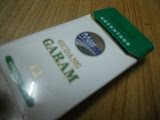What Is Nuclear Reactor?
A nuclear reactor is a system that contains and controls sustained nuclear chain reactions. Reactors are used for generating electricity, producing radionuclides (for industry and medicine), conducting research, and military purposes. All of the various designs of power-producing reactors accomplish the same simple task: spinning a generator. Many commercial reactors pass water over heat-producing fuel rods to generate steam and run a turbine. Some designs call for the passage of helium over a pile of heat-producing fuel pebbles. Yet another design uses liquid sodium as a coolant.
Nuclear Reactor Technology.
A nuclear reactor is a device to initiate, and control, a sustained nuclear chain reaction. The most common use of nuclear reactors is for the generation of electrical power and for the power in some ships. This is usually accomplished by methods that involve using heat from the nuclear reaction to power steam turbines..
Components of Nuclear Reactors
There are main component of nuclear reactor.
The core of the reactor contains all of the nuclear fuel and generates all of the heat. It contains low-enriched uranium (<5% U-235), control systems, and structural materials. The core can contain hundreds of thousands of individual fuel pins.
The coolant is the material that passes through the core, transferring the heat from the fuel to a turbine. It could be water, heavy-water, liquid sodium, helium, or something else. In the US fleet of power reactors, water is the standard.
The turbine transfers the heat from the coolant to electricity, just like in a fossil-fuel plant.
The containment is the structure that separates the reactor from the environment. These are
usually dome-shaped, made of high-density, steel-reinforced concrete. Chernobyl did not have a containment to speak of.
Cooling towers are needed by some plants to dump the excess heat that cannot be converted to energy due to the laws of thermodynamics. These are the hyperbolic icons of nuclear energy. They emit only clean water vapor.
This image shows a nuclear reactor heating up water and spinning a generator to produce electricity. It captures the essence of the system well. The water coming into the condenser and then going right back out would be water from a river, lake, or ocean. It goes out the cooling towers. As you can see, this water does not go near the radioactivity, which is in the reactor vessel.
Nuclear Reactor Core
A nuclear reactor core is the portion of a nuclear rector containing the nuclear fuel components where the nuclear reactions take place. The nuclear reactor is the region within a nuclear reactor where the nuclear fuel assemblies are located and the nuclear reaction consequently takes place.
Fuel Pins
The smallest unit of the reactor is the fuel pin. These are typically uranium-oxide (UO2). They are surrounded by a zirconium clad to keep fission products from escaping into the coolant.
Fuel Assembly
Fuel assemblies are bundles of fuel pins. Fuel is put in and taken out of the reactor in assemblies.
Fuel Core
This is a full core, made up of several hundred assemblies. Some assemblies are control assemblies. Various fuel assemblies around the core have different fuel in them. They vary in enrichment and age, among other parameters. The assemblies may also vary with height, with different enrichments at the top of the core from those at the bottom.
To understand more about nuclear reactor you all can see this video
References










2 comments:
Interesting article with good information to begin with. My question is, since there has been a lot of hype about 'nuclear poison', i would like to know in which component of the reactor does nuclear poison play a part in and how? Is it present in every kind of nuclear reactor?
Roshen James a/l Jaya Krishnan
me084283
james_thierry@hotmail.com
Reaktor Bolshoy Moschnosti Kanalniy (High Power Channel Reactor) (RBMK)
A Soviet design, built to produce plutonium as well as power. RBMKs are water cooled with a graphite moderator. RBMKs are in some respects similar to CANDU in that they are refuelable during power operation and employ a pressure tube design instead of a PWR-style pressure vessel. However, unlike CANDU they are very unstable and large, making containment buildings for them expensive. A series of critical safety flaws have also been identified with the RBMK design, though some of these were corrected following the Chernobyl accident. Their main attraction is their use of light water and un-enriched uranium. As of 2010, 11 remain open, mostly due to safety improvements and help from international safety agencies such as the DOE. Despite these safety improvements, RBMK reactors are still considered one of the most dangerous reactor designs in use. RBMK reactors were deployed only in the former Soviet Union.
Ravindran Navalan
me083947
ravnav11@gmail.com
Post a Comment